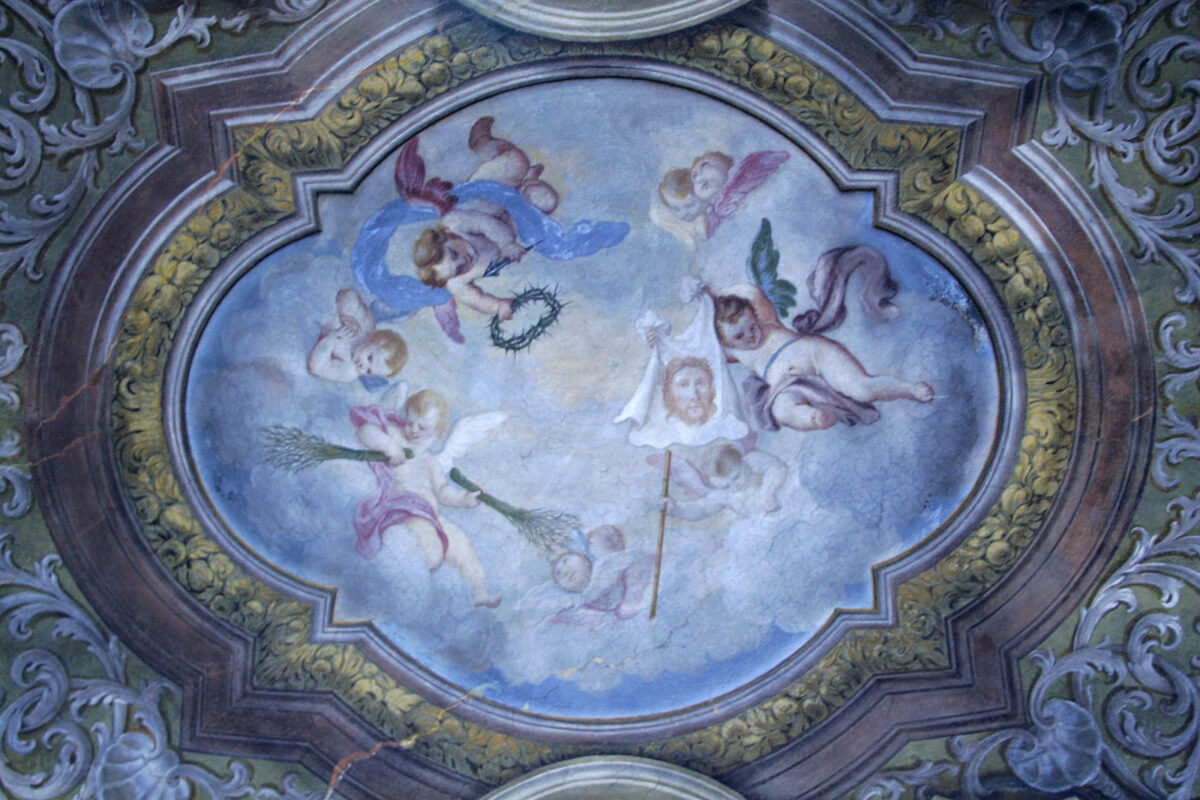The entrance to the Museum is through the porticoed courtyard located to the North of the cathedral, known as the “small cloister of the dead” or “cemetery” for being a burial site for many centuries.
Of medieval origin, it was rebuilt in 1729 in Baroque style, while preserving the ancient perimeter walls.
The frescoes by Antonio Maria Ruggeri and Francesco Bianchi on the vaulted ceilings (1732), as well as those by Andrea Porta on the East wall, which houses an altar and an 18th-century wooden statue of the Madonna of the Seven Sorrows, are also in the Baroque style.
Among the finds here preserved:
- Three fragments of Carolingian slabs with interlaced decorations, probably part of the the presbytery of the first basilica.
- A marble altar table from the early medieval high altar.
- A Roman sarcophagus known as the “Good Shepherd’s” for the figure carved at the center of its front (3rd-4th century)
- The Roman sarcophagus of Audasia Calé, named after the child buried there (3rd century). Embellished with winged genii and festoons, this sarcophagus was repurposed in 1042 to house the precious relics of the ancient church of St. John. The discovery of these relics in 1300 prompted the reconstruction of the cathedral.
- The tombstone of Ursina Castiglioni, a noblewoman from Monza who passed away in 1433. She is depicted lying on a funeral bed, draped in elegant Gothic-style garments.










